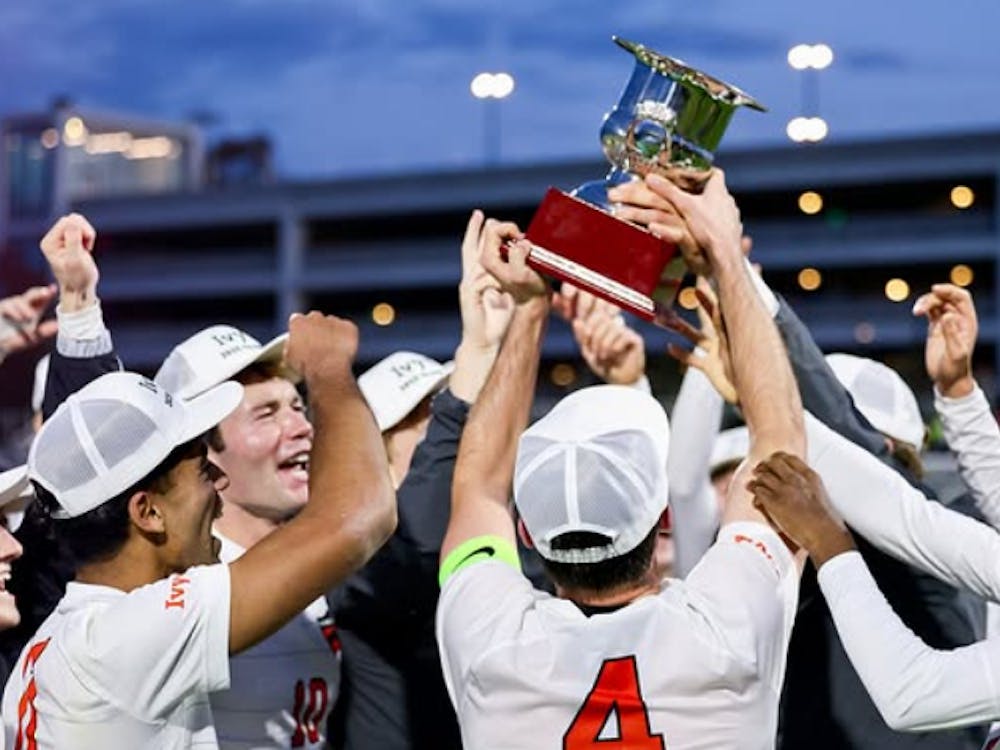Imagine playing full-court basketball with two players per team, or full-field soccer with five players per team, and you may begin to appreciate rugby sevens, a much faster, more open variation of rugby played with seven players per side for seven-minute halves — instead of the standard 15 players and 40-minute halves — on a full-size pitch.
Why should you care about sevens? Earlier this month, the International Olympic Committee (IOC) added men’s and women’s rugby sevens — along with men’s and women’s golf — to Olympic competition, starting in 2016 at Rio de Janeiro.
The IOC Executive Board recommended golf and rugby sevens over baseball, softball, squash, karate and roller sports in August, before the full committee gave final approval by majority vote on Oct. 9. Despite being turned down by the IOC in 2005, this time sevens was endorsed by an overwhelming 81-8 margin.
To figure out what has changed in the last four years, one need look no further than West Windsor Field and Princeton’s women’s rugby head coach, Emil Signes.
In addition to coaching collegiate 15-per-side rugby at Princeton for the last five years, Signes has headed countless sevens teams, including the U.S. men’s and women’s national squads. In his 35 years of coaching rugby, Signes has accumulated more than 60 championships at sevens tournaments and is considered among the top sevens coaches in the world.
“Emil is quite literally a rugby legend throughout the world,” said senior Elaine Bigelow, co-captain of the women’s rugby team. “You can say his name to anyone in the rugby community, and they have either been coached by him, know someone who’s been coached by him, have coached with him or at least can tell you who he is and what he’s done.”
“Coach Signes has had an unbelievable impact on U.S. sevens,” said Pete Davison, a sophomore on the men’s rugby team who played under Signes for the U.S. Collegiate Sevens Team this summer. “He was one of the first people to coach sevens here.”
In what may turn out to be his greatest contribution to the sport, Signes has been instrumental in expanding the international circuit for women’s sevens. He was instrumental in getting a women’s division included at the Hong Kong Sevens, a tournament that draws hundreds of thousands of fans to watch the best sevens teams in the world, and helped establish a World Cup for women’s sevens, which was held for the first time in March.
Signes said he believes that the increased international presence of women’s rugby may have inspired the IOC’s change of heart. “I think its far more appealing to the Olympic committee to have a sport that both genders play at a high level,” he explained. “The women’s World Cup this year saw some really good-quality rugby and, importantly, neither gender was favored.”
The U.S. men’s team will be, in a sense, the defending Olympic champion in 2016, as the United States won the gold medal when 15s rugby was played at the 1924 Games. This begs the question: Why would the International Rugby Board — rugby’s governing body — have proposed sevens, not the more-popular 15s, to the IOC?
First, sevens is more spectator-friendly than 15s, in which play is often paused for set pieces and viewers without a technical knowledge of rugby may struggle to understand what is happening. Sevens is shorter and more intuitive, and the rules are designed to encourage quick ball movement.
“It’s a speed game,” Signes said. “For Americans, it’s really easy to understand because most everything takes place in the open field. You see people tackle each other, chase each other, pass to each other: It’s a lot less technical than 15-a-side rugby.”

In 15s, players require a week of rest after playing for 80 minutes. Sevens athletes can play multiple times in the same day, both because matches are shorter and because there is less contact.
Davison pointed out that while the same few countries dominate international 15s every year, countries with smaller Olympic programs — like Fiji, Samoa and Tonga — or rugby communities — like Kenya and Portugal — are able to maintain top sevens teams.
“That’s the beauty of sevens,” Davison said. “Because it’s so easy to pick up and you don’t need really big guys, it’s easier for a lot of countries to compete at the highest level.”
All this bodes well for America’s chances in 2016, Signes said. “Raw athleticism brings a lot to the game, and the skill set is smaller than in 15s. If you can catch, pass, tackle and sprint, you have a head start. You obviously have to understand the game and make the correct decisions, but it’s a good start for the Americans, because we have athletes,” he explained.
By showcasing rugby’s fastest, most agile players, the rugby community hopes to gain popularity for its sport. The American rugby community in particular looks to attract crossover athletes from other sports.
“Basketball players make great reads in sevens, and they’ve got fabulous hands,” Signes said. “From football, running backs, wide receivers and defensive backs would all bring great speed and ball skills.”
“Americans are crazy about the Olympics,” Davison added. “I expect this will attract converts from other sports.” This summer, Davison played sevens with Leonard Peters, a former Chicago Bears practice squad safety who is now on the U.S. sevens national team.
Signes also sees the Olympics as a chance for women’s rugby to gain recognition as a legitimate sport. “One time I heard two dads talking on the sideline, and one asked, ‘Did you ever think you’d see your daughter doing this?’ ” Signes said.
Starting in 2016, American dads will be watching their sons and daughters play rugby on the sports world’s biggest stage.







